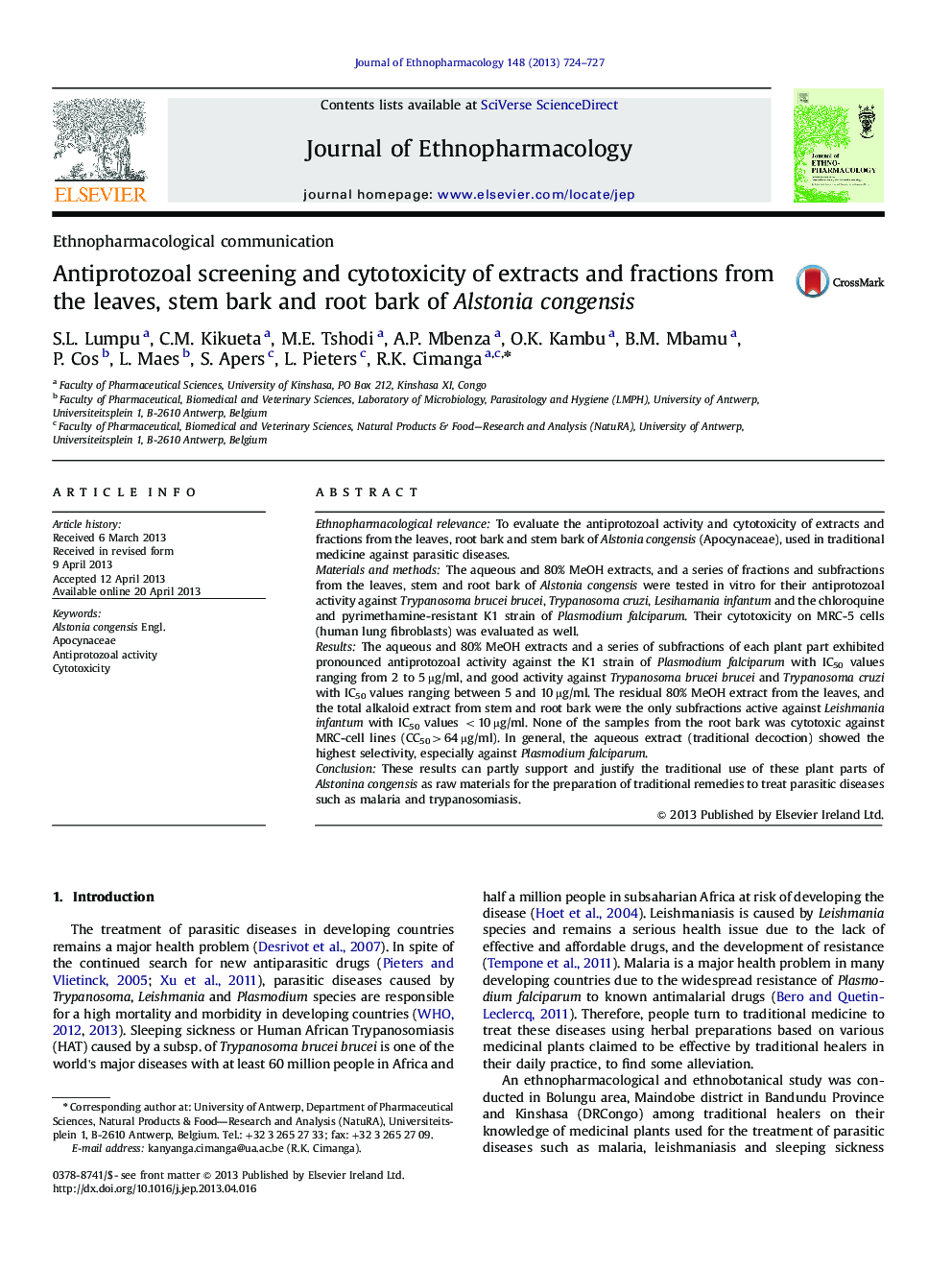| کد مقاله | کد نشریه | سال انتشار | مقاله انگلیسی | نسخه تمام متن |
|---|---|---|---|---|
| 5837188 | 1123958 | 2013 | 4 صفحه PDF | دانلود رایگان |

Ethnopharmacological relevanceTo evaluate the antiprotozoal activity and cytotoxicity of extracts and fractions from the leaves, root bark and stem bark of Alstonia congensis (Apocynaceae), used in traditional medicine against parasitic diseases.Materials and methodsThe aqueous and 80% MeOH extracts, and a series of fractions and subfractions from the leaves, stem and root bark of Alstonia congensis were tested in vitro for their antiprotozoal activity against Trypanosoma brucei brucei, Trypanosoma cruzi, Lesihamania infantum and the chloroquine and pyrimethamine-resistant K1 strain of Plasmodium falciparum. Their cytotoxicity on MRC-5 cells (human lung fibroblasts) was evaluated as well.ResultsThe aqueous and 80% MeOH extracts and a series of subfractions of each plant part exhibited pronounced antiprotozoal activity against the K1 strain of Plasmodium falciparum with IC50 values ranging from 2 to 5 µg/ml, and good activity against Trypanosoma brucei brucei and Trypanosoma cruzi with IC50 values ranging between 5 and 10 µg/ml. The residual 80% MeOH extract from the leaves, and the total alkaloid extract from stem and root bark were the only subfractions active against Leishmania infantum with IC50 values <10 µg/ml. None of the samples from the root bark was cytotoxic against MRC-cell lines (CC50>64 µg/ml). In general, the aqueous extract (traditional decoction) showed the highest selectivity, especially against Plasmodium falciparum.ConclusionThese results can partly support and justify the traditional use of these plant parts of Alstonina congensis as raw materials for the preparation of traditional remedies to treat parasitic diseases such as malaria and trypanosomiasis.
162
Journal: Journal of Ethnopharmacology - Volume 148, Issue 2, 9 July 2013, Pages 724-727